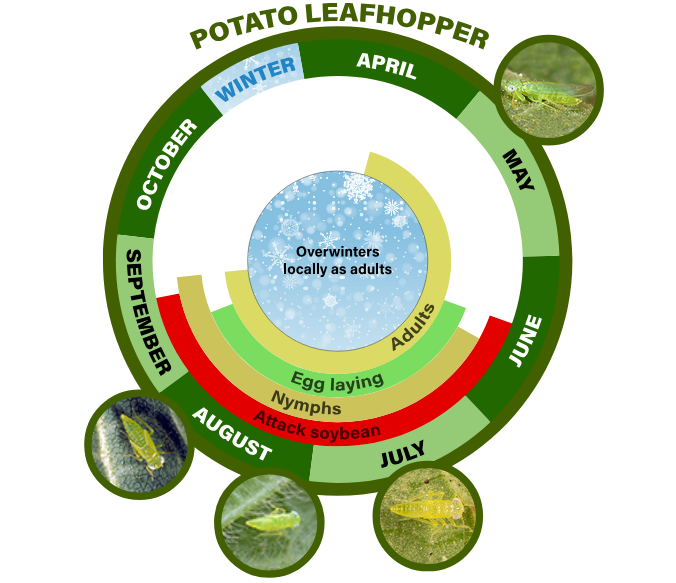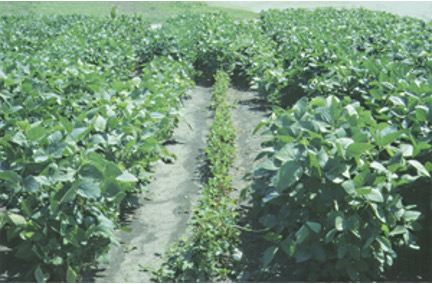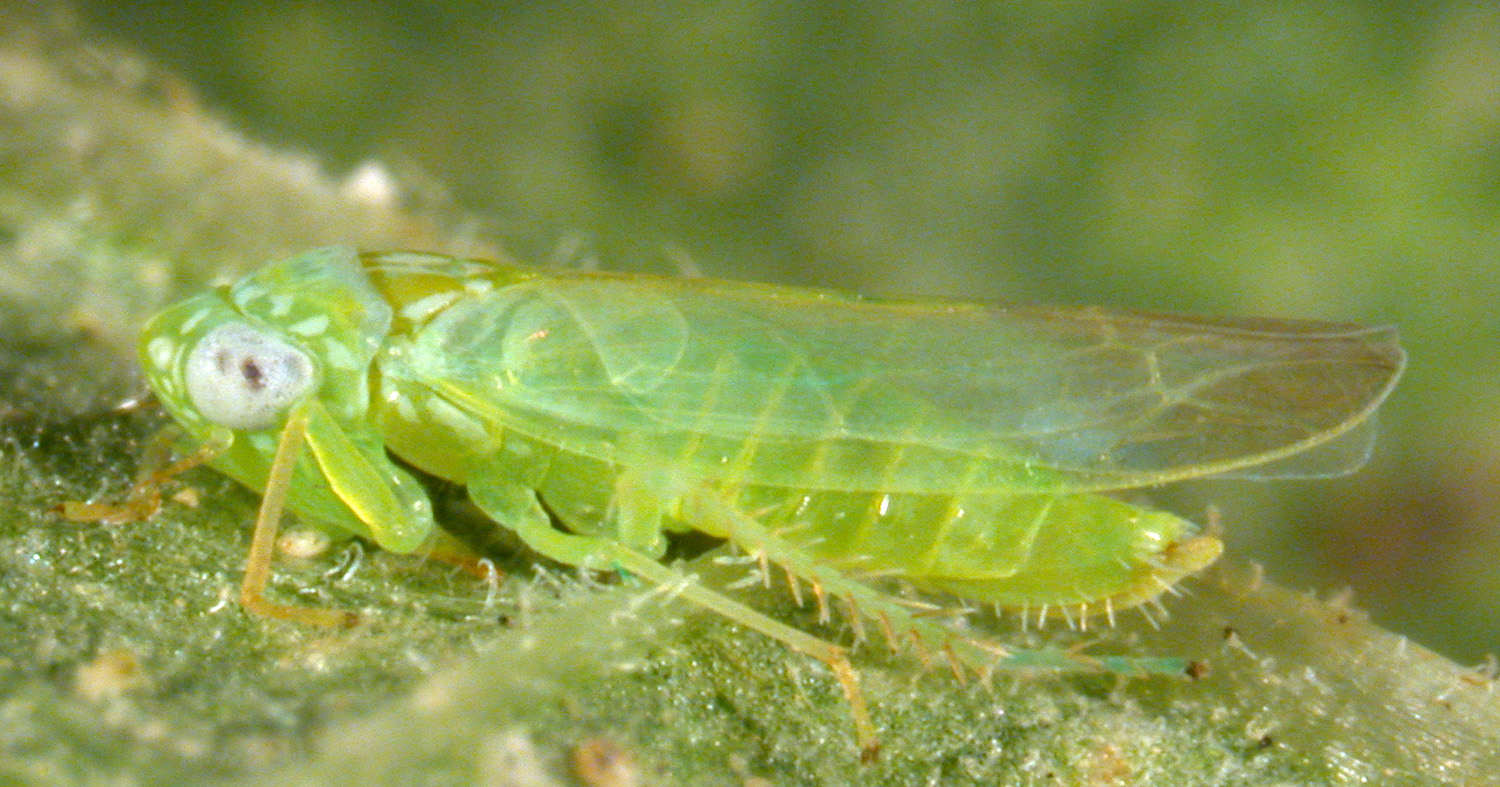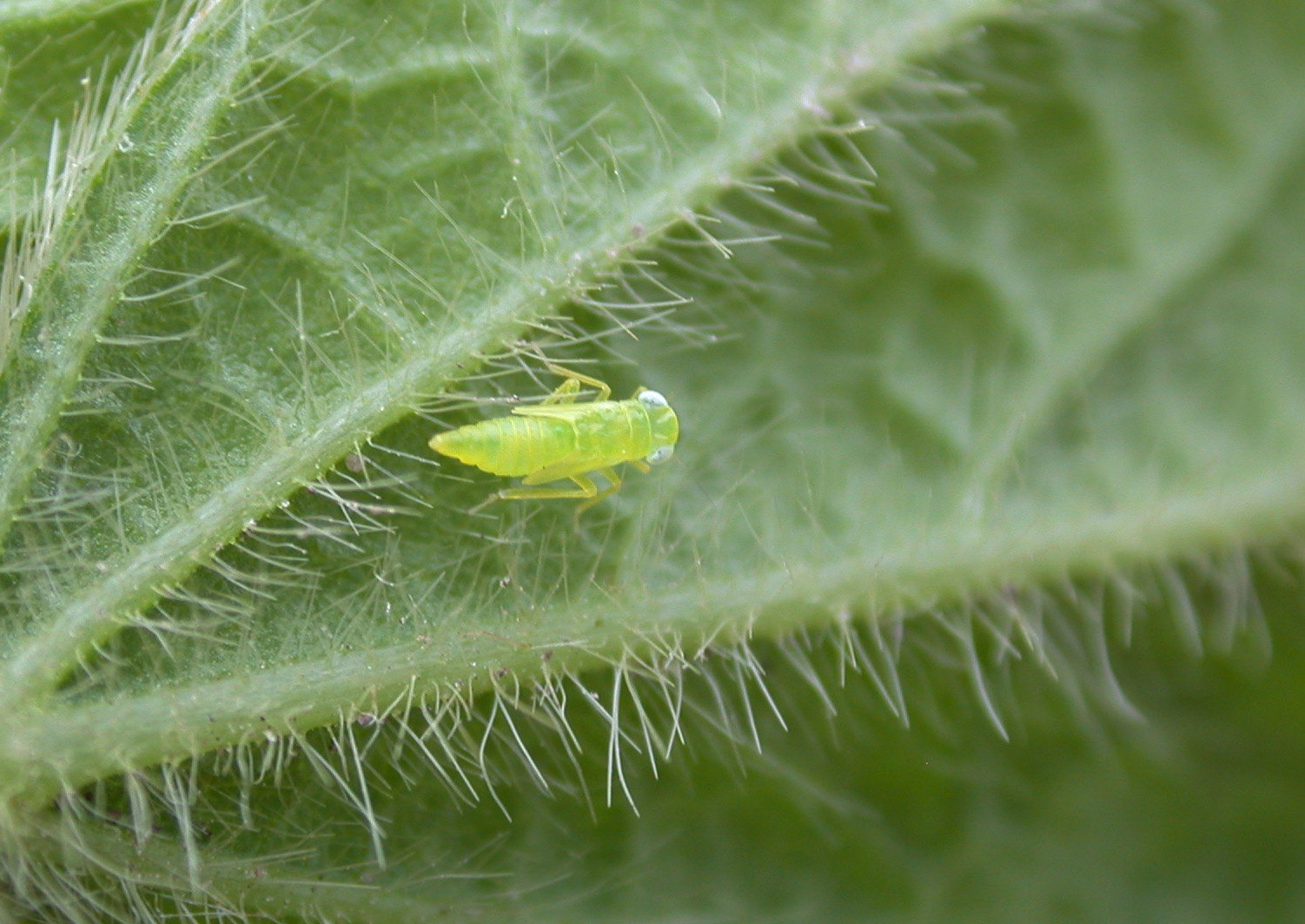Potato Leafhoppers (Soybean)
Empoasca fabae Harris
Search the Pest & Crop Newsletter

The ability to see these full-sized life-cycle images is currently disabled to resolve an issue.
Appearance and Life History
The potato leafhopper feeds on more than 100 cultivated and wild plants including; apples, beans, potatoes, eggplant, rhubarb, celery, dahlia, peanuts, alfalfa, clovers, and soybean.
The adult potato leafhopper is a tiny, yellowish-green, wedge-shaped insect, about 1/8 inch (3 mm) long. The nymphal stages closely resemble the adult except that they are smaller, wingless, and more yellow in color. Both adults and nymphs are very active. The nymphs, which cannot fly, walk sideways at a rapid pace when disturbed, while adults will either fly or jump.
The potato leafhopper does not overwinter in the Midwest, but is carried annually northward from the Gulf Coast states by spring winds. Typically, adults first appear in the Midwest by the end of April or in early May. However, high populations usually do not occur until mid-summer as temperatures rise. There are around three or four generations in the eastern Midwest each year.
Damage

Photo by J. Obermeyer
Both potato leafhopper adults and nymphs feed on soybean, but the most serious damage is caused by the nymphs. The potato leafhopper uses its piercing-sucking mouth parts to remove plant juices. As it feeds, it injects a toxin into the plant which causes a decrease in the plant’s ability to produce photosynthate. Damage symptoms first appear as yellowish patches on the leaves with crinkling and cupping, often confused with herbicide damage. As leafhopper feeding continues, the plants become stunted. Soybean varieties which have sparse or very short leaf pubescence are most susceptible to feeding and subsequent damage. Plants under moisture stress appear to be more vulnerable to damage. Damage is most likely to occur on late planted soybean.
Sampling Method
- If potato leafhoppers are “kicked-up” as foliage is disturbed and some leaf discoloration/crinkling is noticed, sampling should be initiated.
- For plants at the V4 growth stage or less, carefully inspect the underside of leaves of 5 plants in 5 areas for adults and nymphs. Record the number of leafhoppers and calculate the average number per plant.
- For soybeans at or beyond the V5 growth stage, take 20 sweeps with a sweep net in each of 5 field areas.
- Count the leafhoppers, both adults and nymphs, from the top to the bottom of the bag. Record only the small yellow-green leafhoppers and not the various brown leafhoppers also commonly found.
- Determine the average number of potato leafhoppers per sweep.
- Select one plant in each sampling location, determine the average number of trifoliolate leaves per plant.
Management Guidelines
Soybean Insect Control Recommendations: E-series 77-W (PDF)
- In general, soybean can withstand potato leafhopper feeding without economic loss. Soybean varieties under various environmental conditions can show differences in level of tolerance to potato leafhopper feeding. Sparsely pubescent soybean seedlings (V1 to V4 plant growth stages) under moisture stress, with high potato leafhopper numbers, are the most susceptible to damage and most likely to benefit from treatment.

Potato leafhopper damage is rarely of economic importance because of built-in mechanical barriers on the plant. Plant hairs, or trichomes, provide this barrier, but their effectiveness depends on their density, stiffness, and length. Potato leafhopper adults, attempting to establish on plants, won’t feed long on leaves that are “hairy” and will soon move on. Once sparsely pubescent plants are found, adults will feed and colonize that field.


